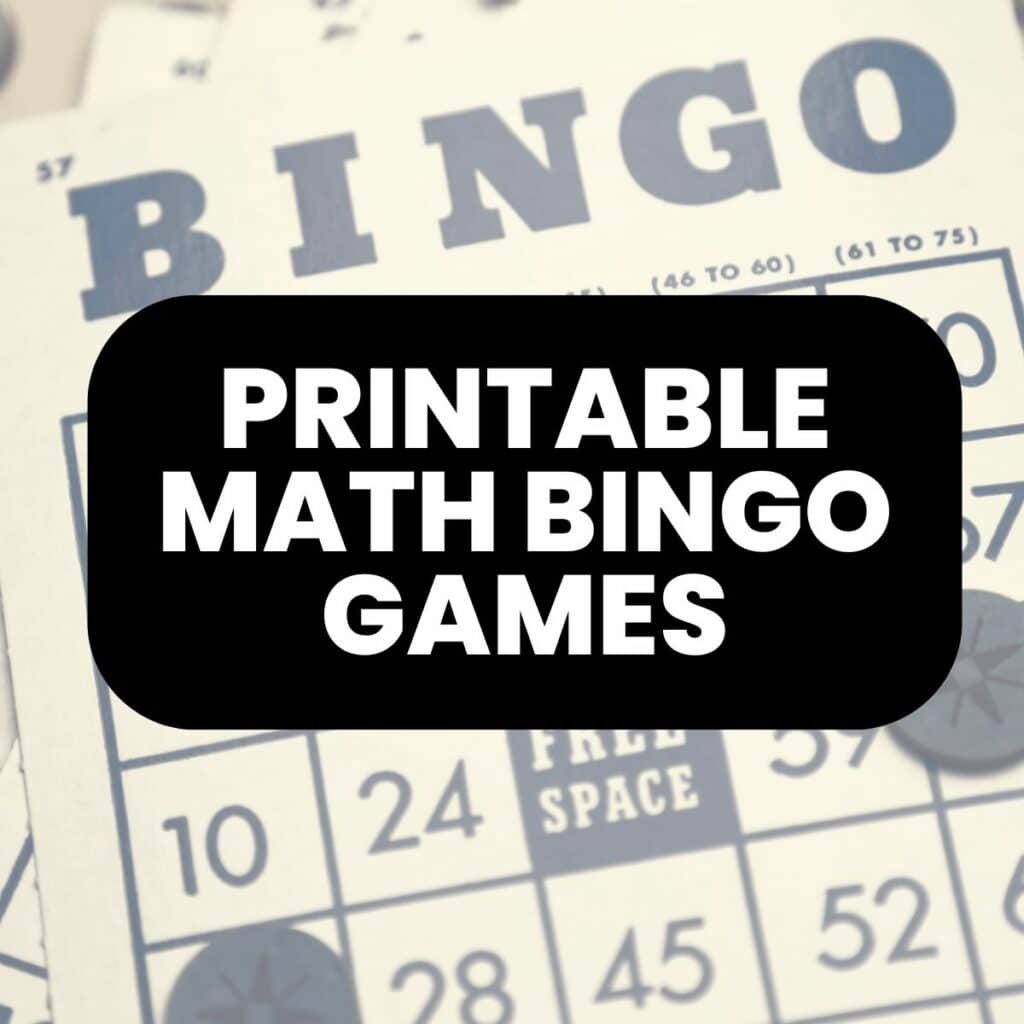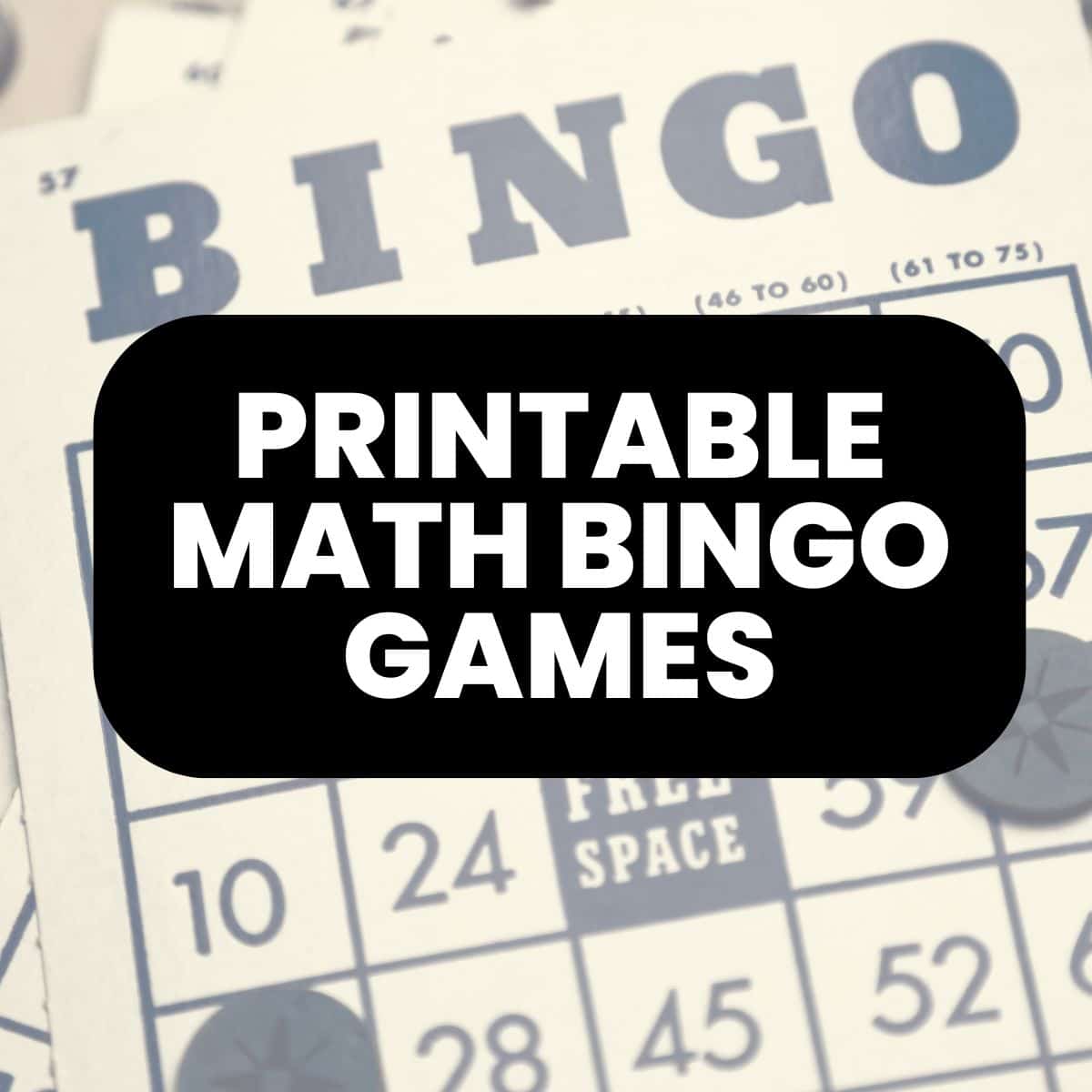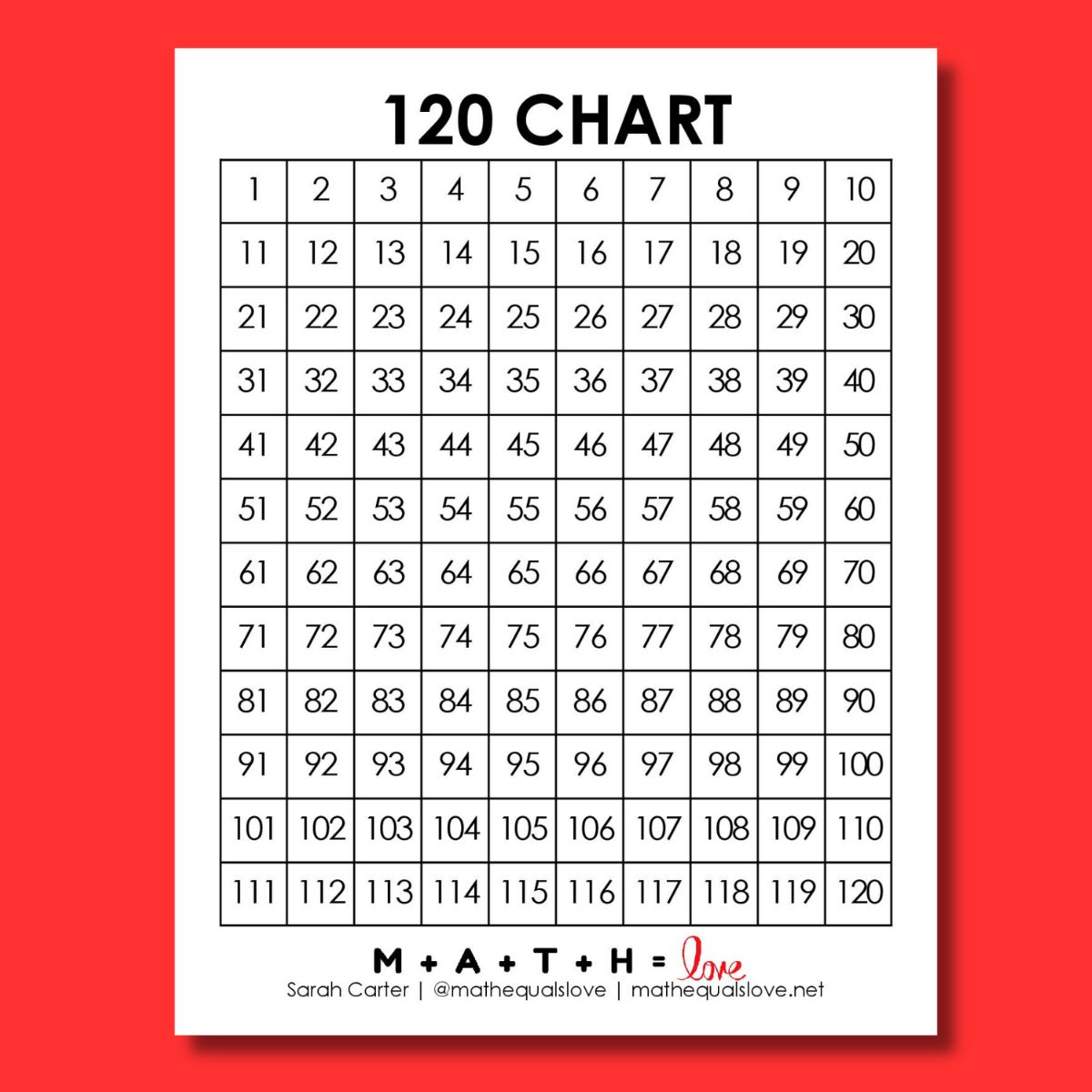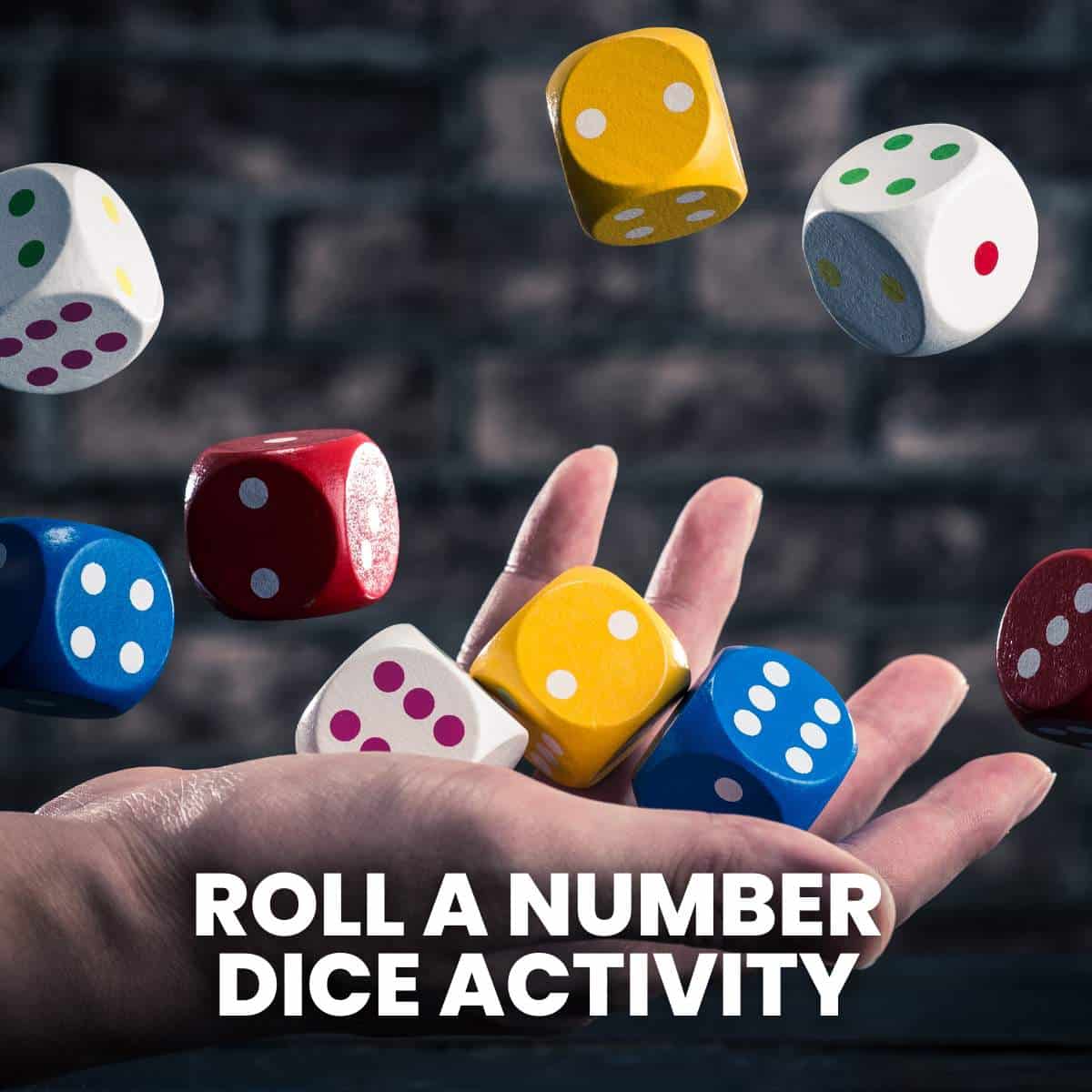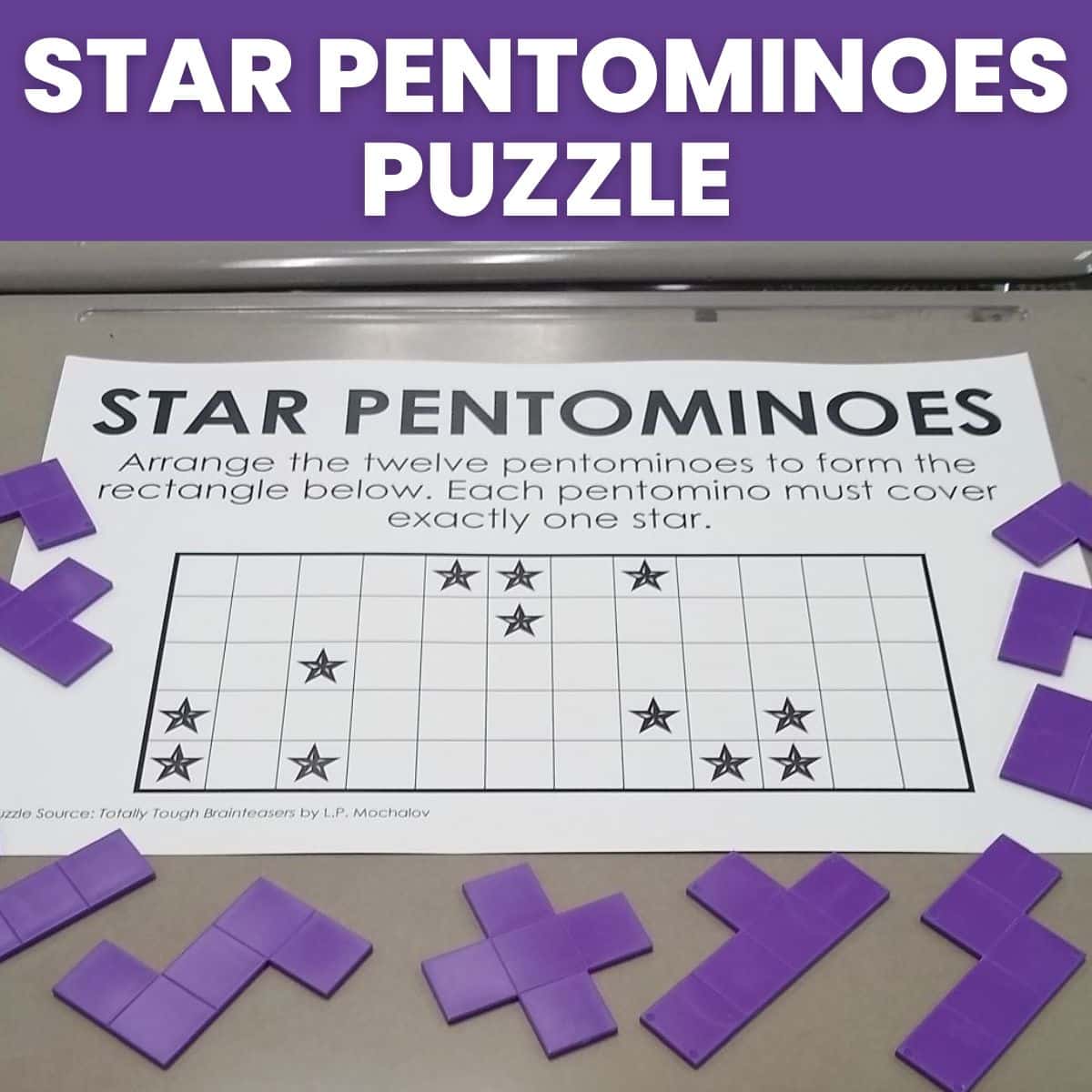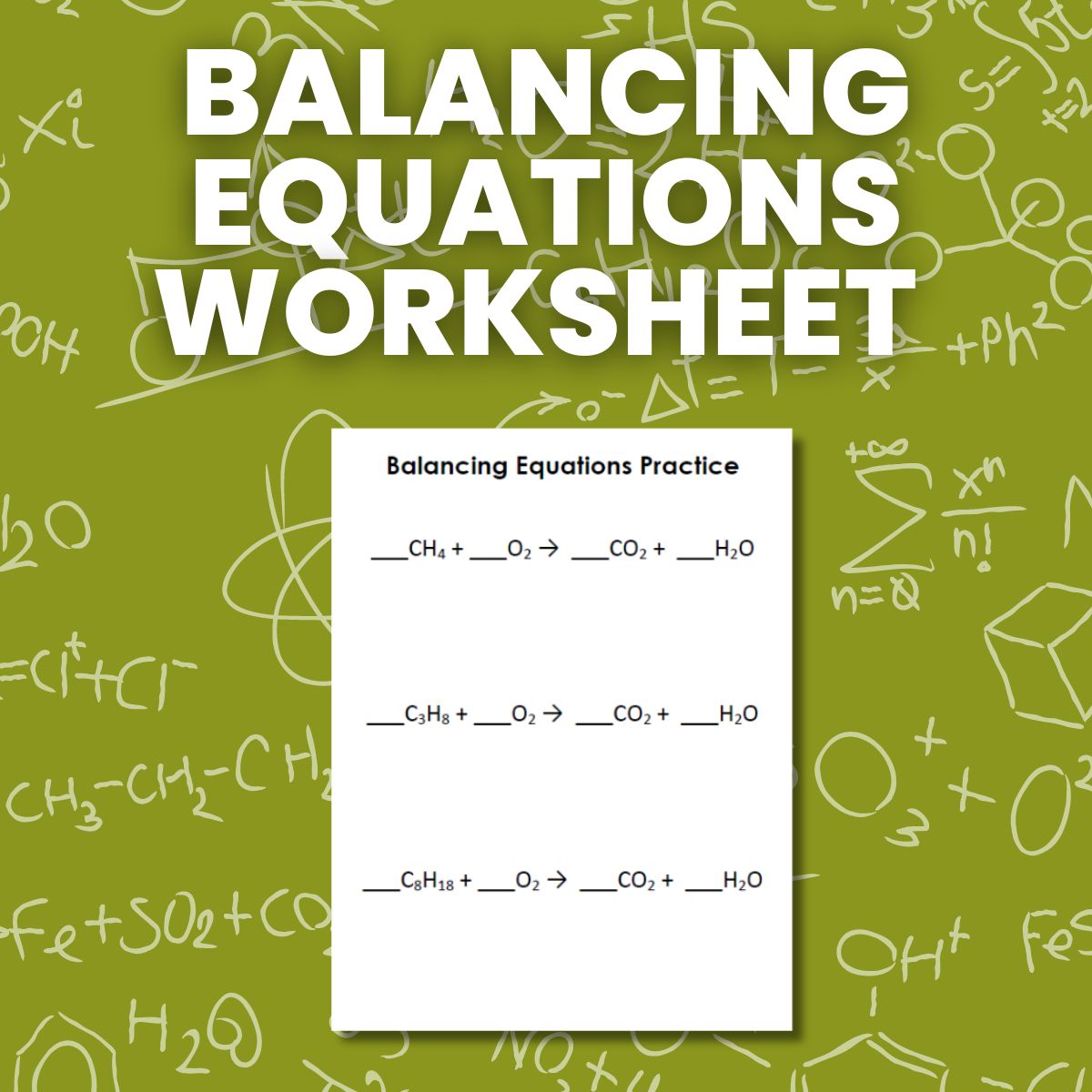Scientifico – A Bingo Style Game for Practicing Scientific Notation
This blog post contains Amazon affiliate links. As an Amazon Associate, I earn a small commission from qualifying purchases.
Scientifico was probably my favorite activity we did for practicing scientific notation. I found it online here.
This bingo game is just one of many free printable math bingo games that I have created for my own classroom and am sharing with you!
To play this game, you’ll need game boards for each pair of students, three dice for each pair of students, and a recording sheet for each student.
I recommend laminating these game boards for durability. Of course, I laminate almost everything.
MATH = LOVE RECOMMENDS…

A laminator is a MUST-HAVE for me as a math teacher! I spent my first six years as a teacher at a school with a broken laminator, so I had to find a way to laminate things myself.
I’ve had several laminators over the years. I currently use a Scotch laminator at home and a Swingline laminator at school.
I highly recommend splurging a bit on the actual laminator and buying the cheapest laminating pouches you can find!
There’s just something about laminating an activity that makes it seem more professional. Plus, it means that I can reuse it year after year without having to recreate it again and again.
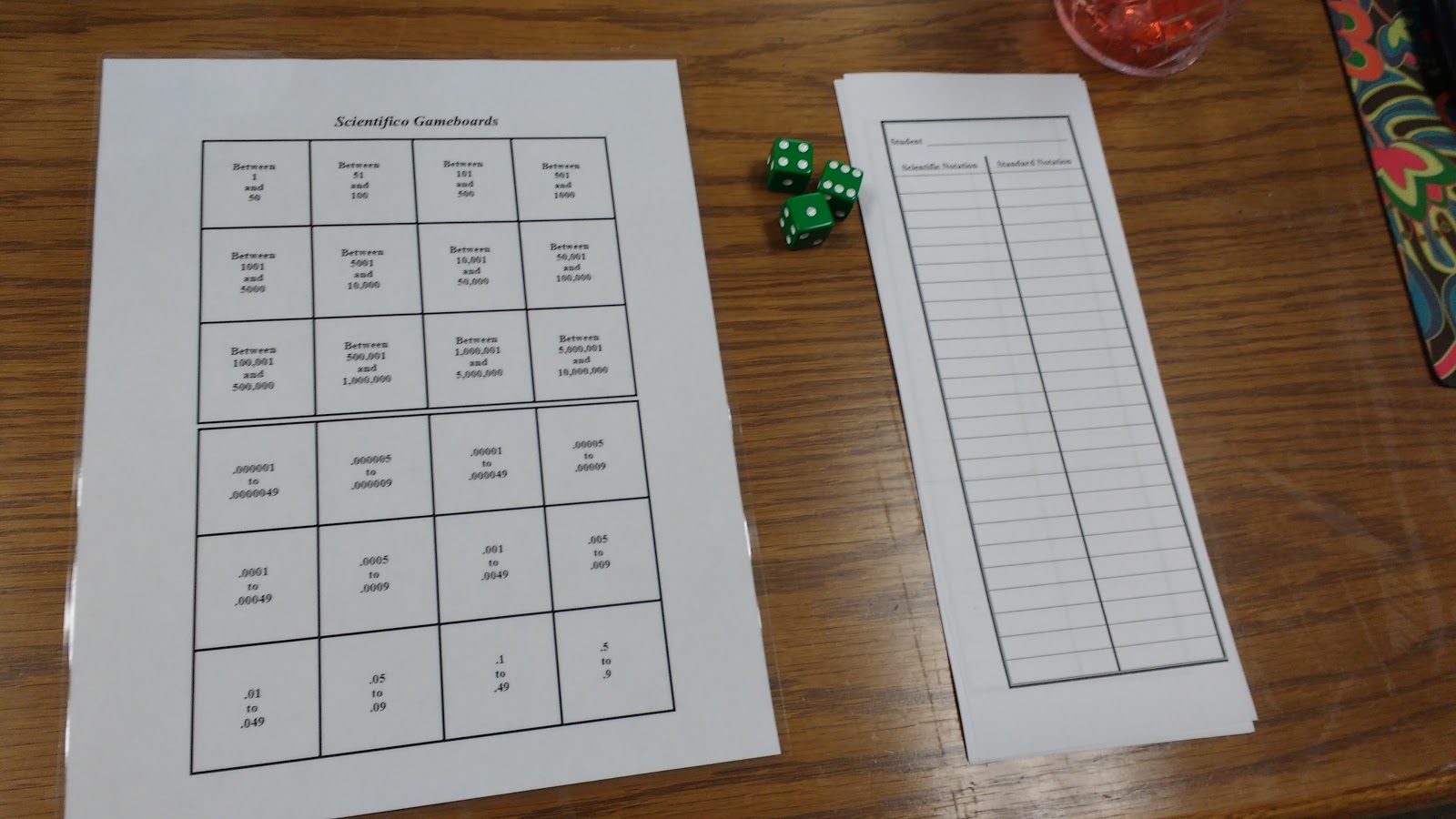
You’ll also need a way to mark which student earned which square. I used bingo chips for this, but you could also have students mark their initials on the game board. I laminated my game boards for durability so you could use dry erase markers if you go that route. You could also just print the game boards on paper and make them disposable.
A couple of years ago, my school asked what supplies I would like to have in my classroom. One of the first things I asked for was a huge bag of bingo chips. We use these for so many different activities. To make them easy to distribute to students, I split them into 6 small bowls that I bought at Dollar Tree for 3 or 4 for a dollar!
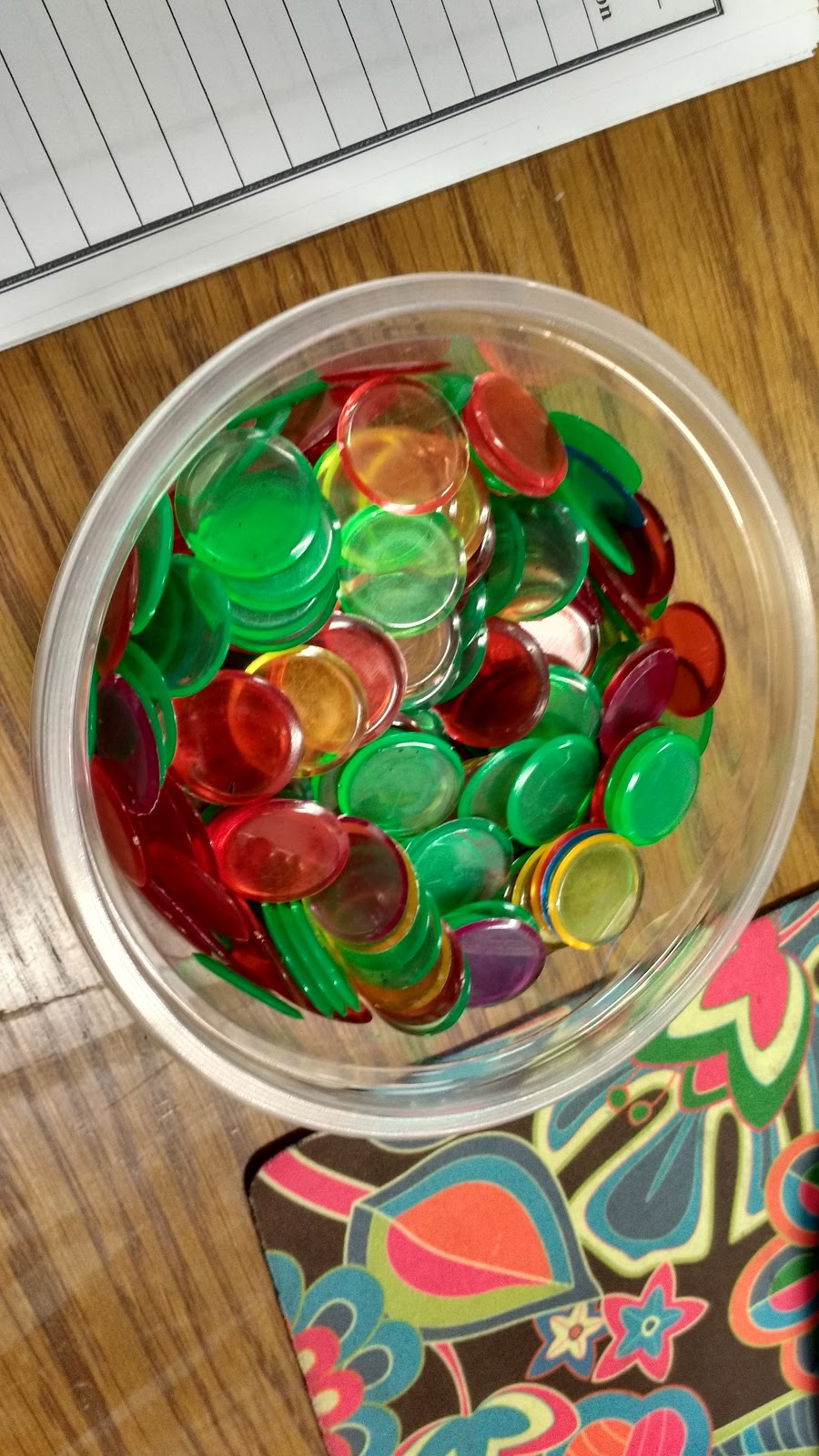
Here’s what the game board looks like:
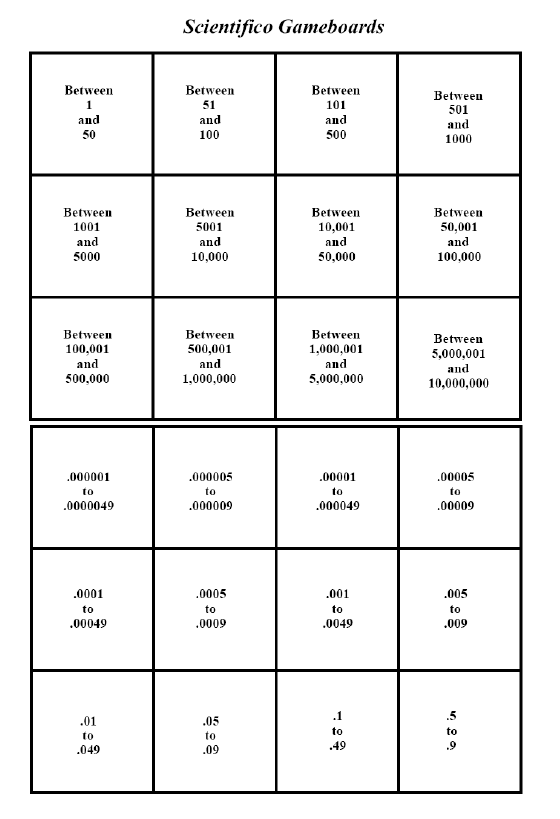
If you look closely, you’ll see that it’s actually two game boards in one.
The first game board features scientific notation with positive exponents.
I had my students play a round on the positive game board first. Then, when they finished they played a round on the negative game board. They found playing on the negative game board MUCH harder because they weren’t sure which spot to claim after creating their number.
Each student will keep track of each of their numbers in scientific notation and standard notation on their scoring sheet.
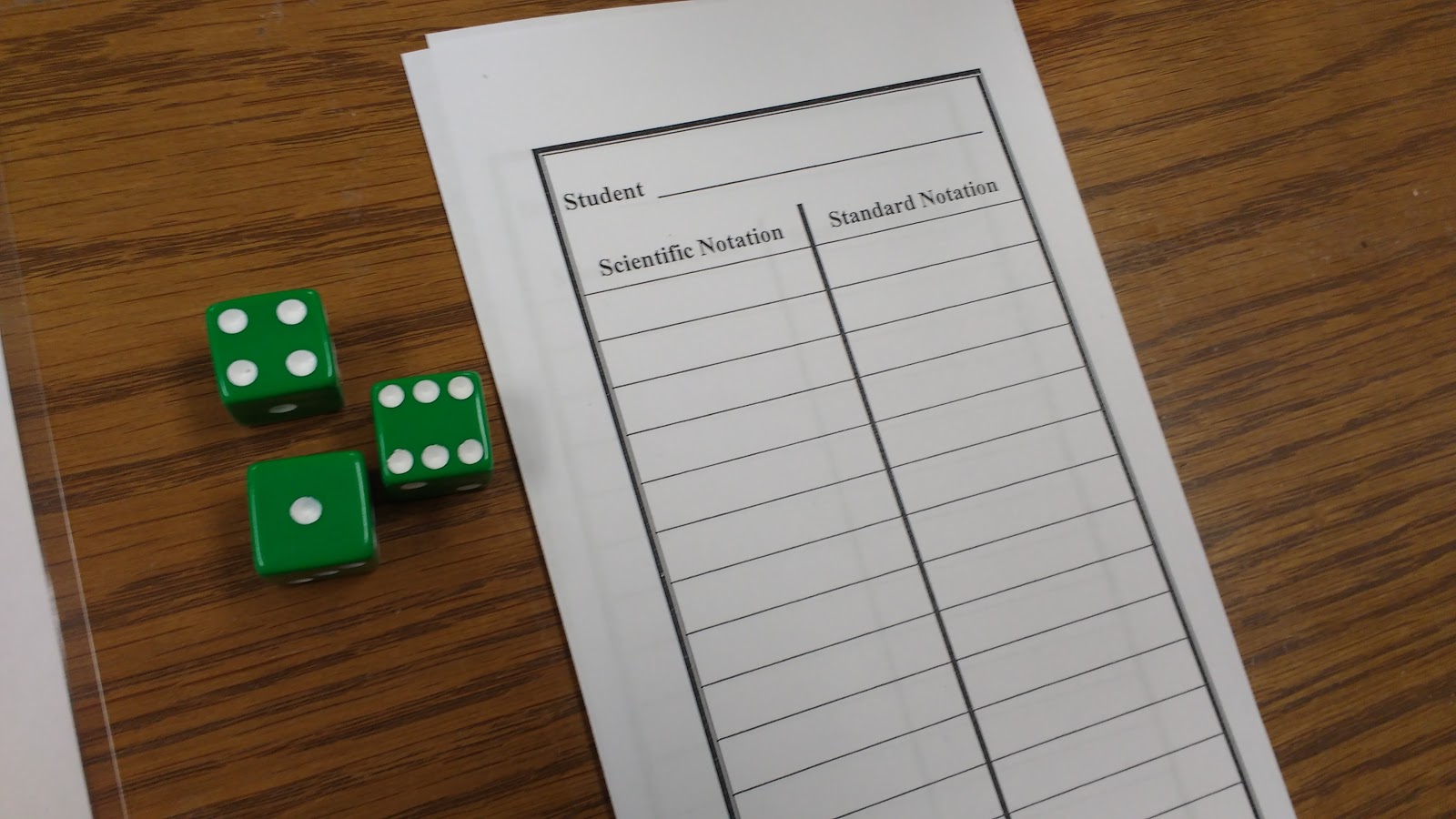
When it’s your turn, you roll 3 standard six-sided dice. If you don’t have a box of dice in your room to make activities out of, you’re definitely missing out. I had my school buy me a set of 500 dice a couple of years ago, and they’ve definitely been used over and over and over.
The three numbers that are produced on the dice are your building blocks for creating your number. Here are the different numbers you could create by rolling a 6, 3, and 1.
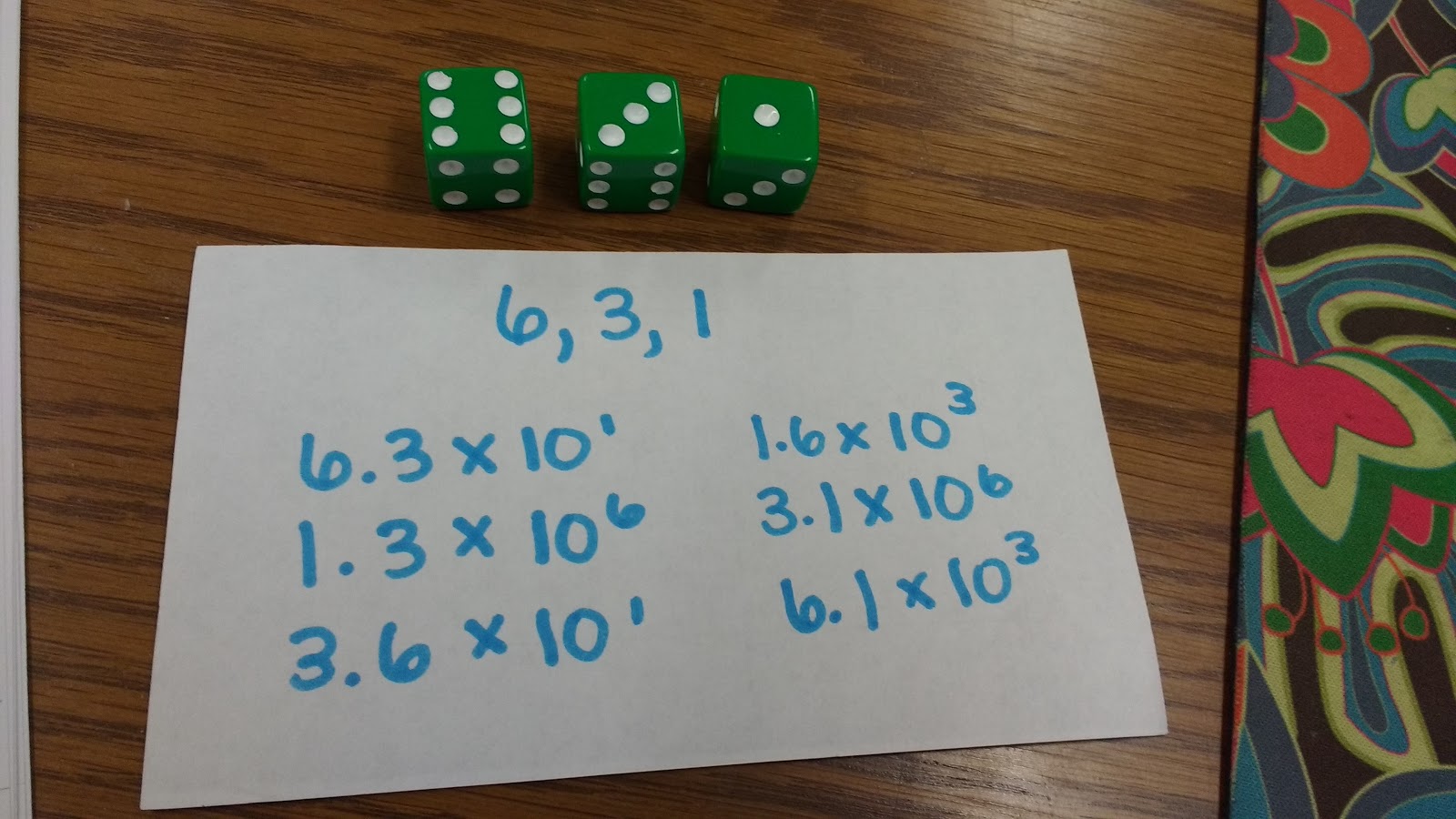
If you chose 6.3 x 10^1, you would be able to place a bingo chip on the between 51 and 100 square.
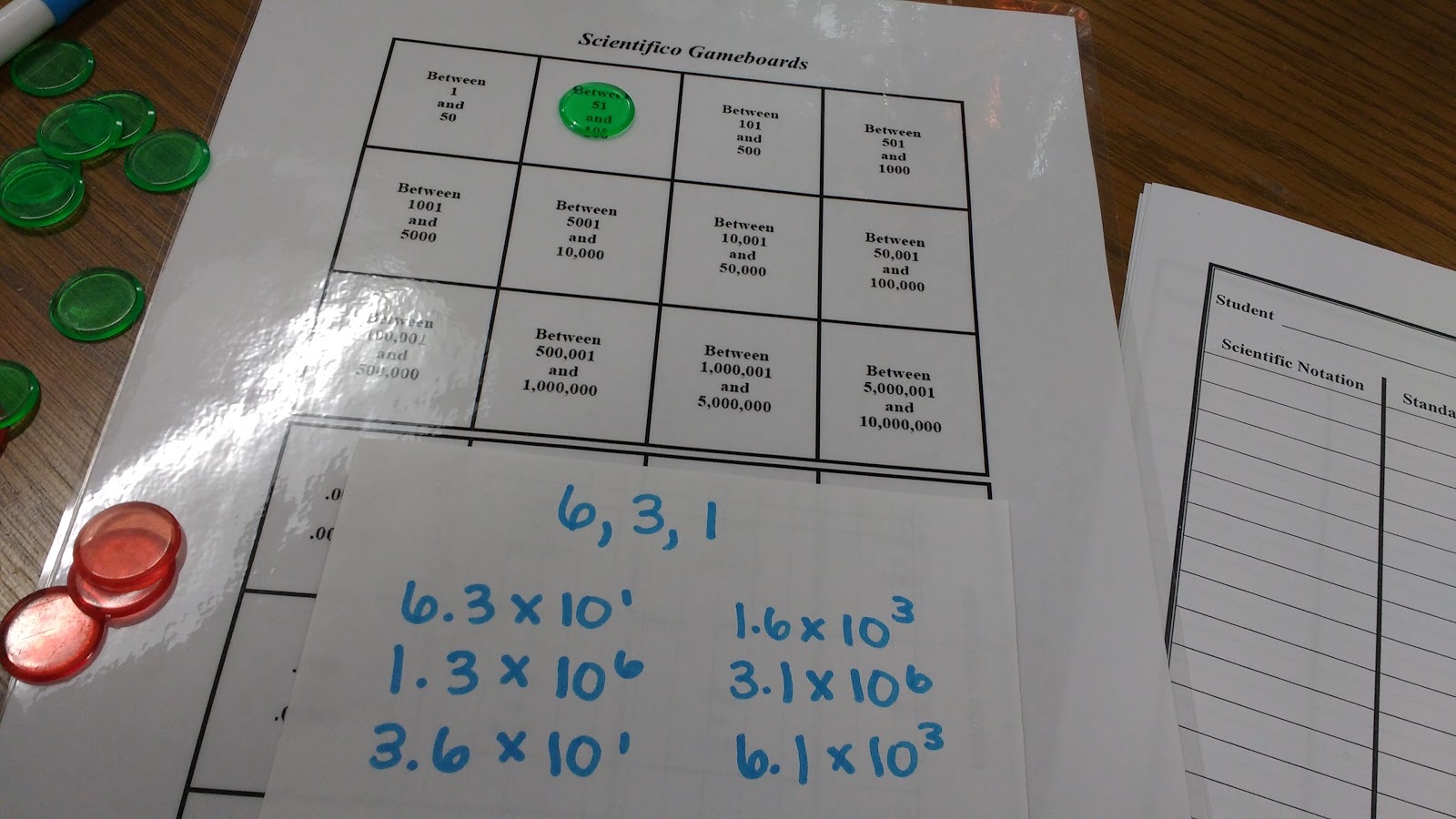
The instructions I found online weren’t the clearest, so I just interpreted them in a way that made sense to me.
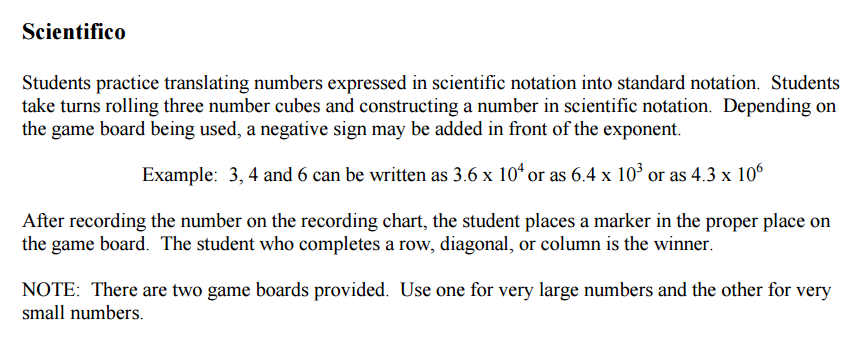
I decided to have each pair of students play on the SAME game board using different colors of bingo chips. You could have each student play on their own game board, but it wouldn’t be quite as competitive. You know how well your students handle competitive activities.
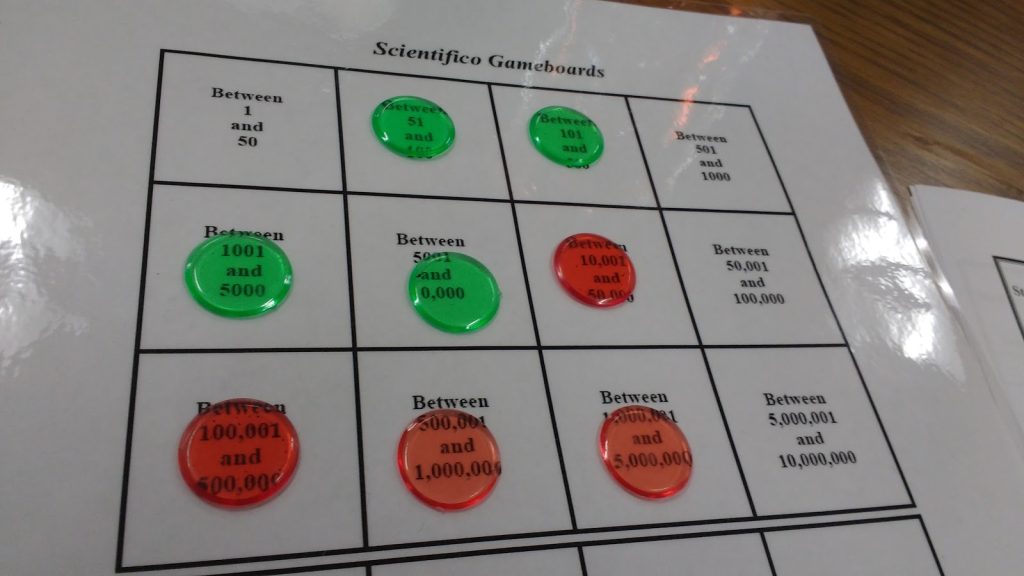
I also decided that a student would win if they got three of their markers in a row horizontally, vertically, or diagonally. So, here are examples of different ways to win:
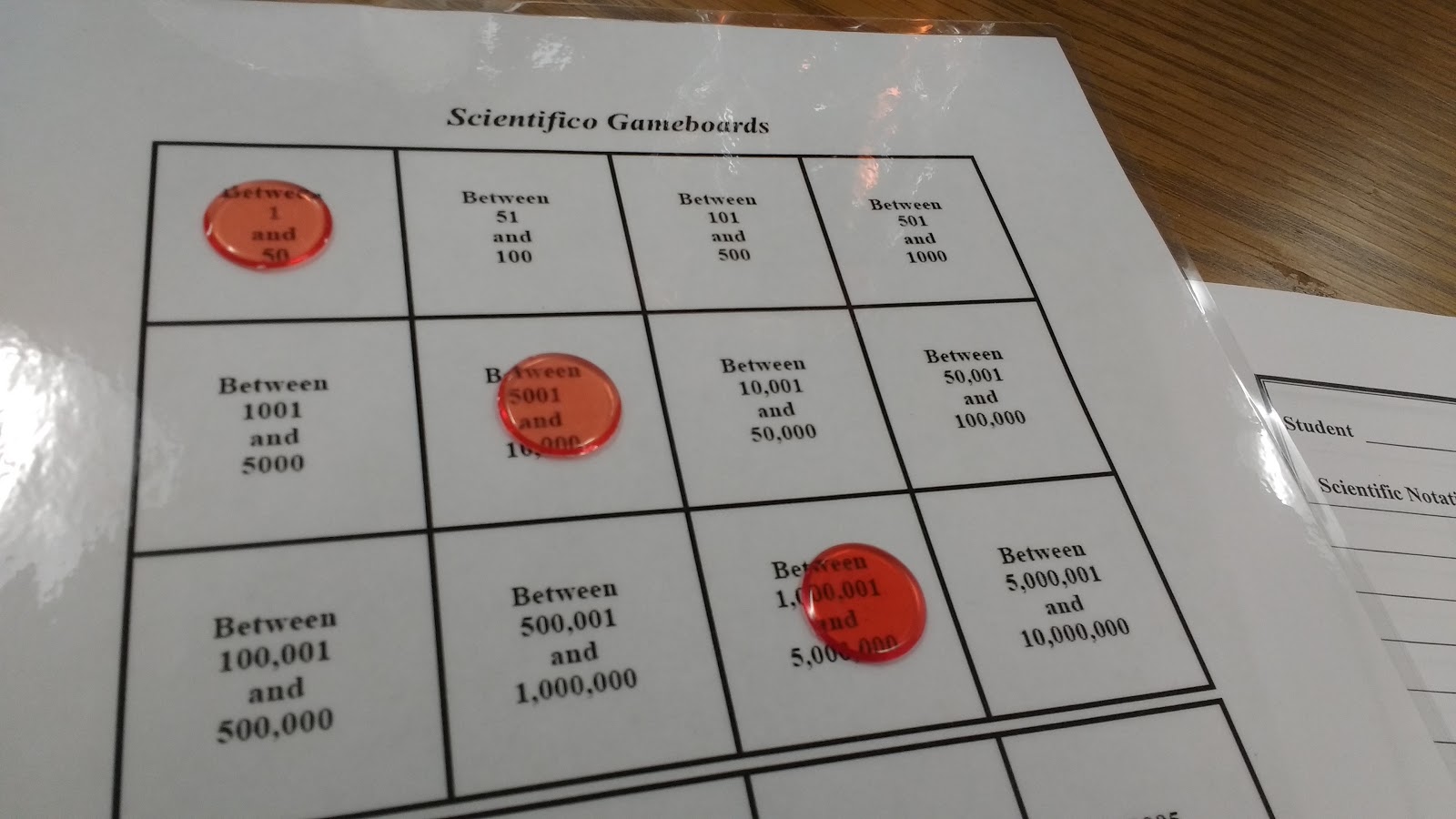
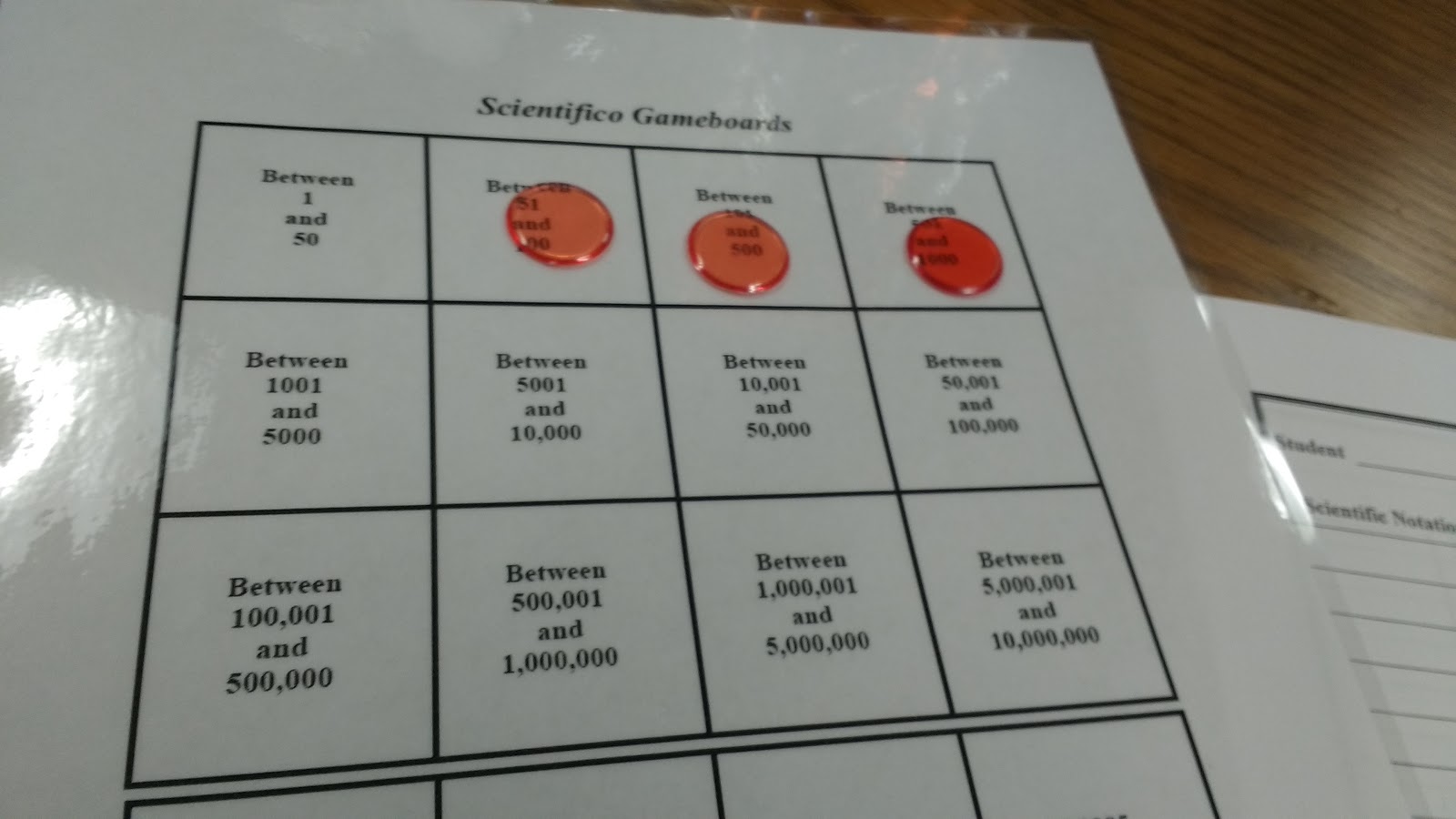
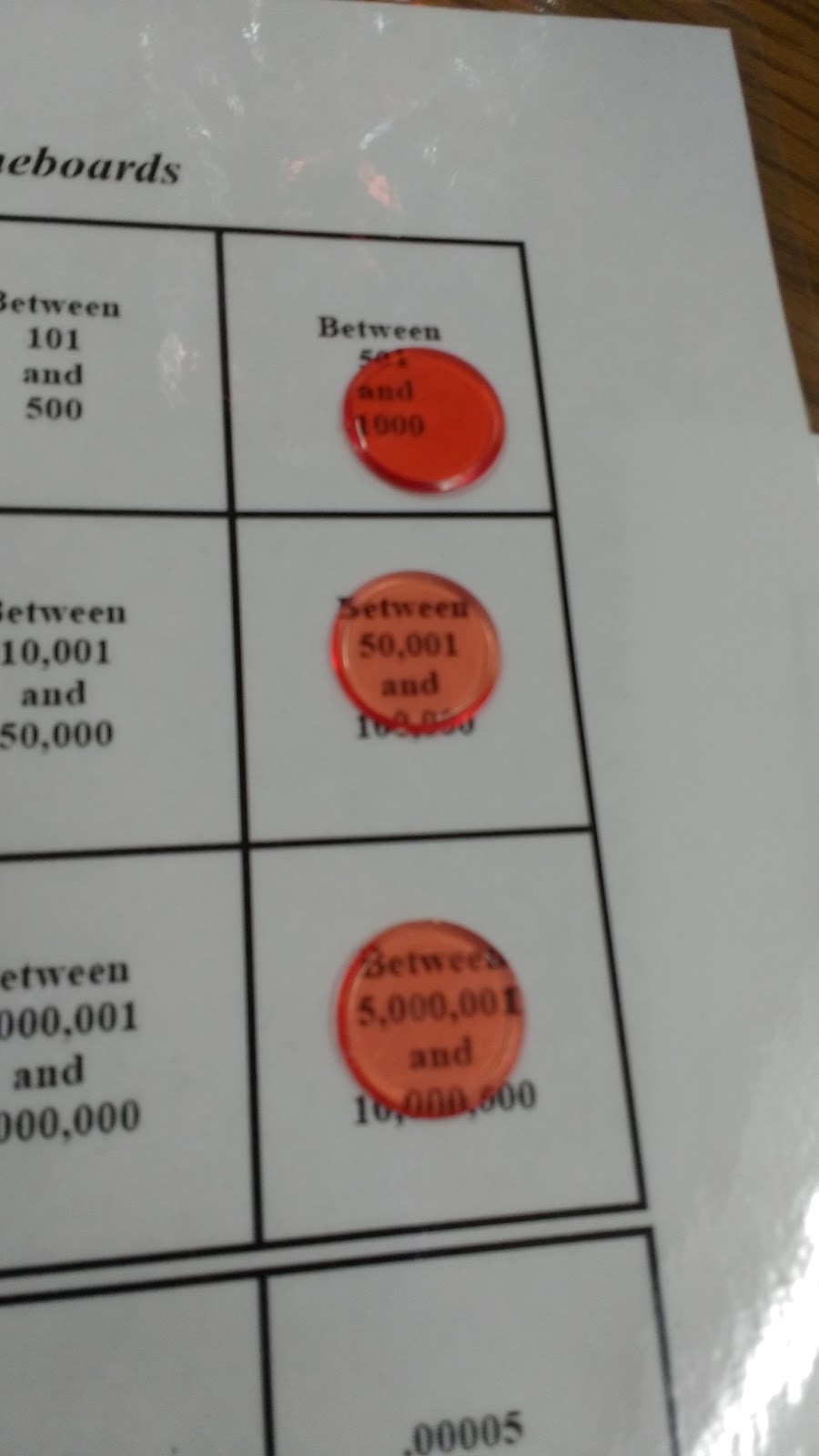
After each move, students should record the number they created in both scientific notation and standard form. I had my students turn these into me so I could look through them for common mistakes to discuss in class.
Here are some pics of my students in action with this game:
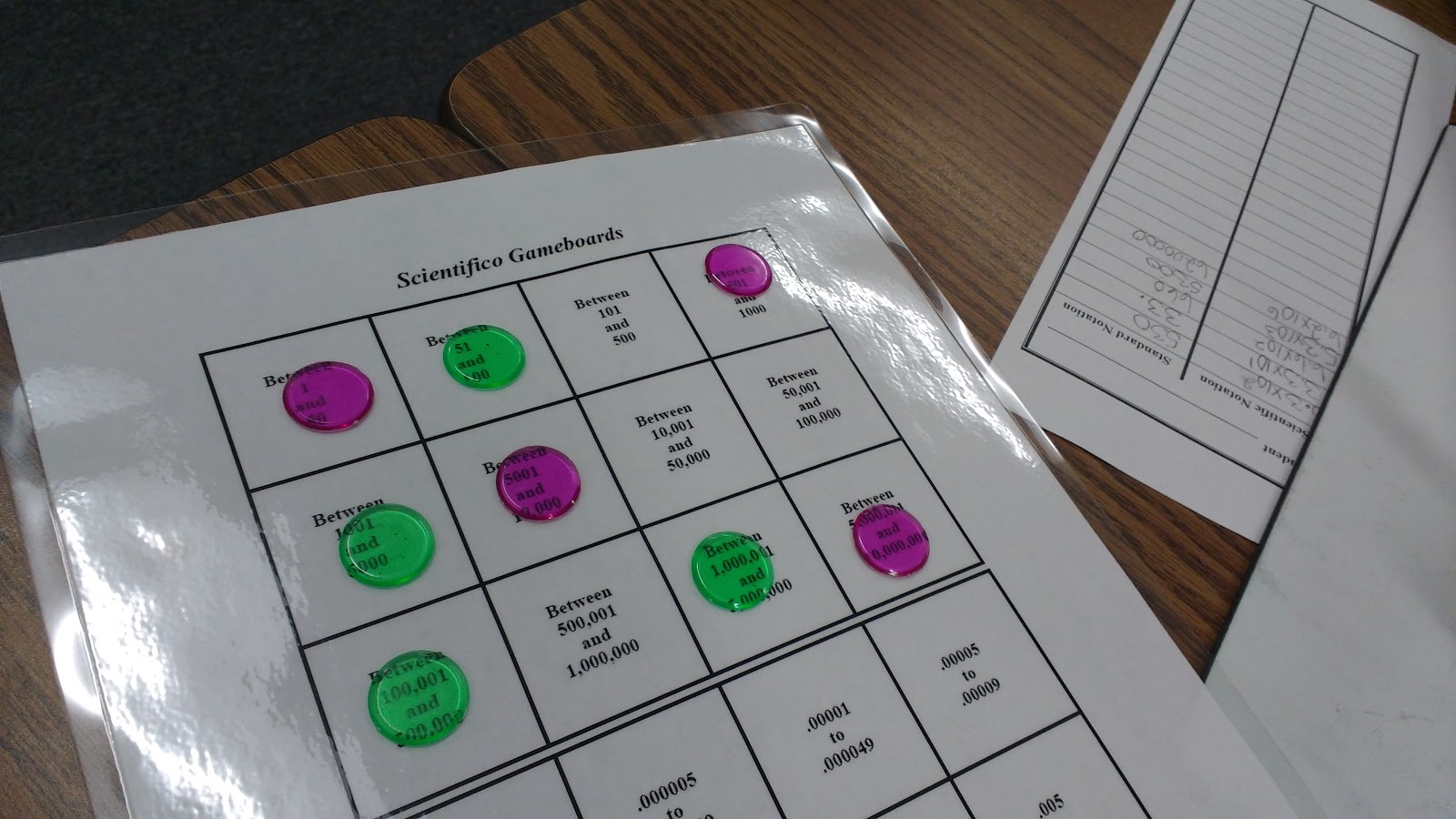
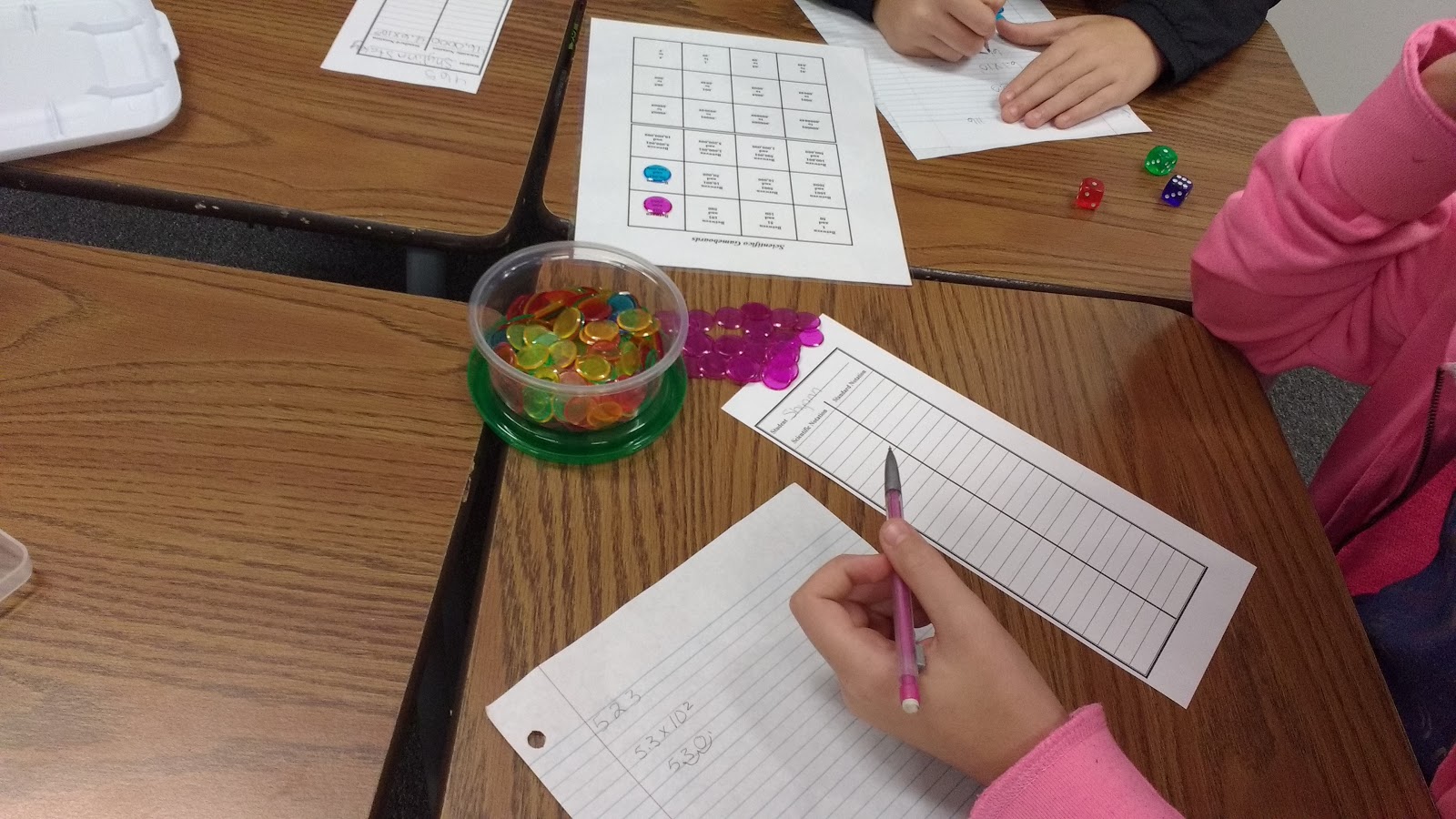
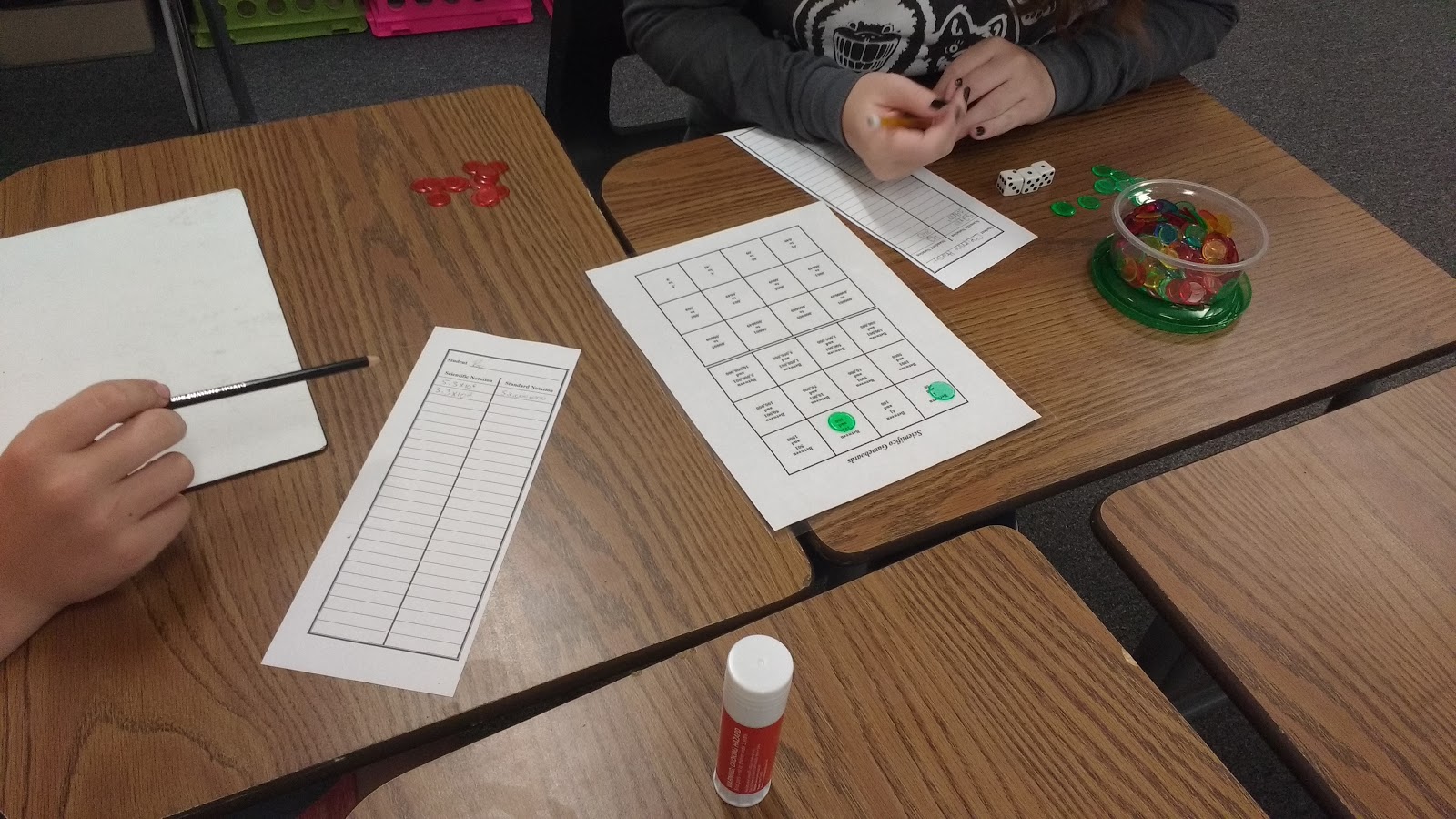
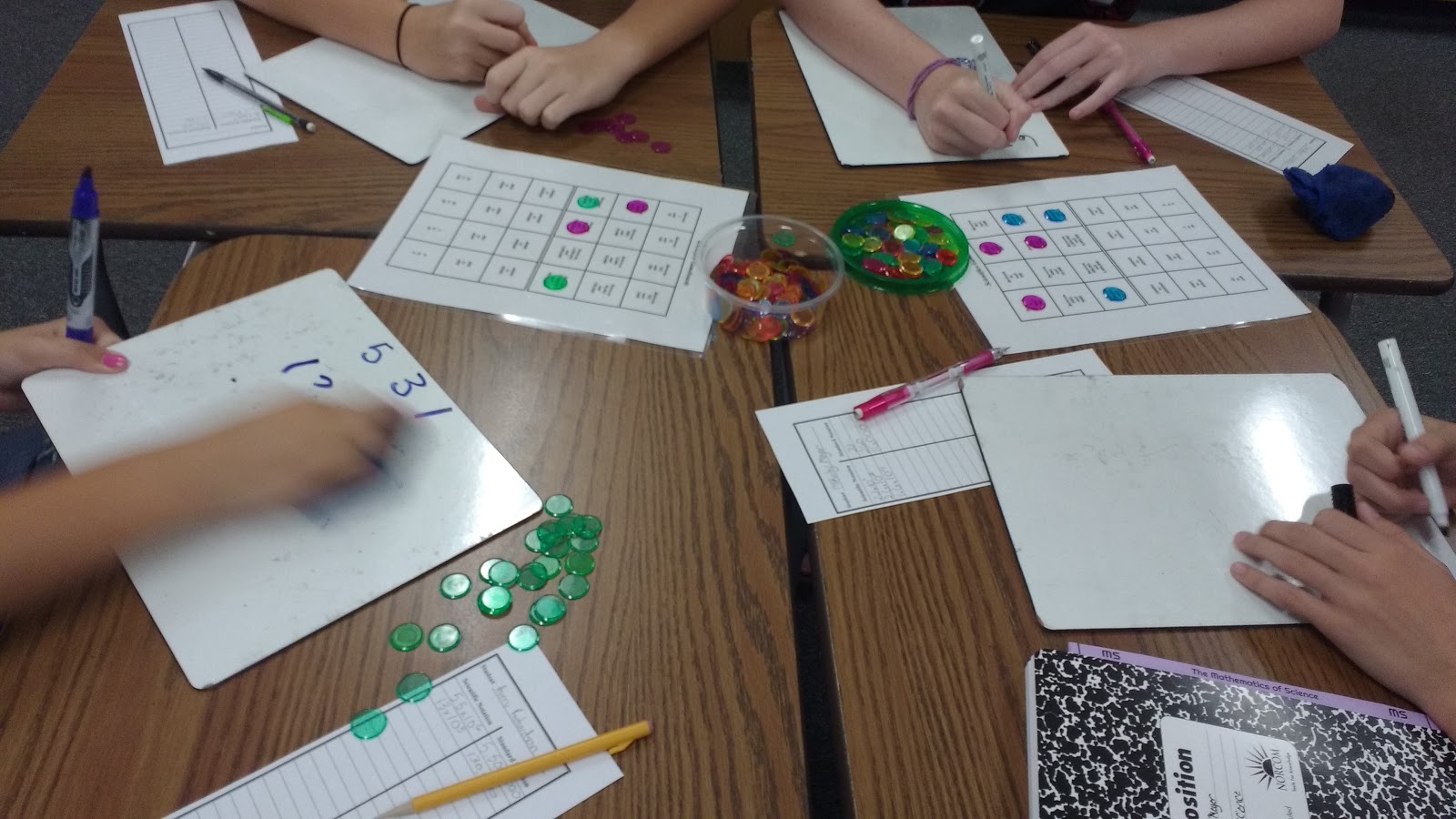
I highly recommend this activity!

